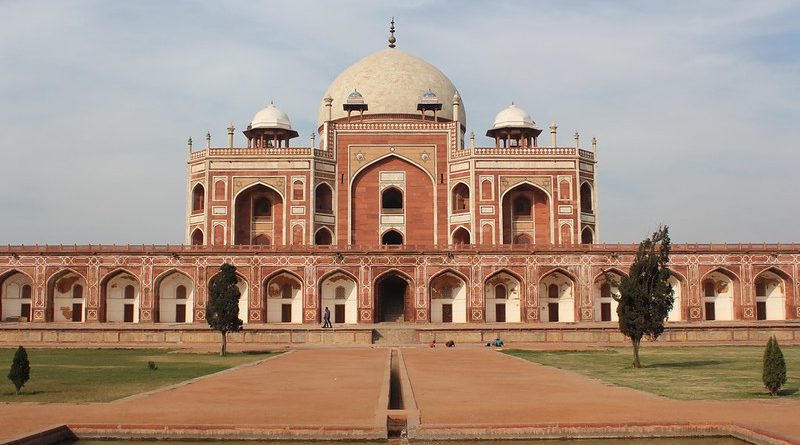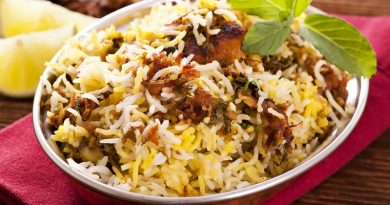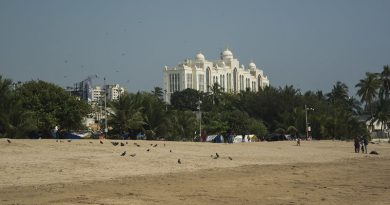Delhi history and travel guide
EXPLORING MUGHAL DELHI
Words: Ian Cross
Delhi, with a population of 17 million people, is amazingly, only India’s third biggest city, and its old town is certainly its most chaotic.
Parts of New Delhi and its satellite cities may reflect India’s leap into the 21st Century, but the crowded streets, laneways and bazaars of Old Delhi remain fixed in the past. In fact, the past is ever present here.
The most impressive monuments in the city are from its Mughal period, between 500 and 250 years ago, from the 16th the 19th centuries, when Northern India was ruled by a powerful and creative dynasty from central Asia. The Red Fort, Delhi’s most iconic historic site, was built by the most famous rulers of the Mughal dynasty, Shah Jahan, who also built the Taj Mahal in Agra. This huge and impressive structure with its incredible red sandstone walls,took just nine years to build and was completed in 1639. It served as the seat of Mughal power, and remained the centre of government right up to the mid 19th Century when the last Mughal emperor was dethroned and the British took full control of India. It is still a powerful symbol of Indian nationhood and it was here that the Indian flag was first hoisted when India became independent in 1947.

Across Delhi, the garden tombs and mausoleums of other Mughal rulers survive to this day. This tomb of Humayun, the second Emperor, built in 1565, is thought to have provided the inspiration for Shah Jahan’s Taj built a century later. Hunayun’s family is also buried in this vast garden complex, along with his favourite hair cutter and the Persian masons who built the tomb. A restoration project funded by the Aga Khan Foundation, has helped preserve the mighty structure.
Nearby the tomb of Saftdarjung has received less attention, but it’s still a beautiful structure, built for the powerful Prime Minister of Muhammad Shah, the Mughal Emperor from 1719 to 1748.
Delhi’s Moslem relics also pre-date the 300 year reign of the Mughals. These garden tombs are of Lodi and Sayyid dynasties, Delhi’s last Sultans, who ruled in the 15th Century, before the arrival if the Mughals. Across Delhi these beautiful ruins lie undisturbed within the fort-like structures that housed them, now park lands that offer a welcome respite from the bustling and chaotic city outside.
There is today still a sizeable Moslem population in Delhi. Appropriately, over in the heart of the Old Town, one finds Jama Masjid, India’s largest Mosque. Completed in 1656, made of red sandstone and white marble,its grand central arch is perfectly framed by three domes and two soaring minarets. It was built on the orders of Shah Jahan,a fitting testament to Delhi’s magnificent Mughal legacy.

A BRIEF HISTORY OF DELHI AND SIGHTSEEING IDEAS
Words: Vinayak Bhattacharjee
The Ancient Mythological era. Up to 563BC.
563BC is the date recognised by many as Buddha’s birth in north-eastern India, in today’s Nepal. It is also one of the first events that can be dated in ancient Indian history. The ancient and mythological era refers to the period from before this when the city of Indraprastha was the capital city of the Pandavas, key participants in the Sanskrit epic The Mahabharata. Indraprastha is believed to have existed where today stands the Purana Qila, an old fortress in central Delhi near the Yamuna river.
India was ruled by several Hindu kings (Maurya, Gupta, Chola, Pallava to name a few) and subsequently entered a period of decline from around the 8th Century AD as the country split into principalities and separate feudal states. The land then experienced invasions by numerous central Asian Muslim tribes. These achieved varying success until 1526 when Babur became the first of a line of rulers known as the Mughals (a derivative of the word Mongol), who established Shahjahanbad, their capital, in the Delhi area.
Pre-Mughal. c 500 BC – 1526 AD
In 1192, Mohammed of Ghor, a ruler from Afghanistan, came into India and captured several places in the north including Delhi. When he returned home, he left one of his generals in charge who became the first Sultan of Delhi. During this time, Islam was introduced into a major part of northern India. It may be mentioned that, even before that, just after the period of the Prophet, Islam was brought to the western coast of India by Arab traders and flourished in what is now Kerala. The Delhi Sultanate gradually took control of more and more of North India over the next 200 years, till Timur, who was called “Timur the Lame” or “Tamberlane” came from Turkey in 1398 to attack India which practically signalled the end of the Delhi Sultanate. Soon the Mughals (from central Asia) came in and took control of the north. In the meantime in the south, in 1336, the Hindu Vijayanagar Empire based at modern day Hampi in Karnataka was established and gained strength.
Travel tip- Relating to this period you should seek out the following monuments/sightseeing opportunities: Qutab Minar, Mehrauli Archaeological Park, Agrasen Baoli, Barakhamba, Muhammad Shah Tomb, Sikander lodhi’s tomb.
Mughal 1526 AD – 1857 AD
The Mughals came from central Asia and soon held sway over most of the northern parts of the subcontinent. In 1526, Babur defeated the then ruler of Delhi, Ibrahim Lodi, at the battle of Panipat and established the Mughal empire which covered large areas of northern India. Mughal rulers introduced Central Asian art and architecture to India. In addition to the Mughals and various Rajput kingdoms, several independent Hindu states, such as the Vijayanagara Empire, the Maratha Empire, and the Ahom Kingdom, flourished simultaneously in southern, western, and north-eastern India, respectively. The Mughal Empire suffered a gradual decline in the early 18th Century principally at the hand of the central Indian Marathas.
After a further loss against the Maratha’s in 1818, the British East India company, which had built its trading influence in India over the previous century, took the Mughal emperor into its fold and started to gradually increase its hold over the subcontinent. In 1857, after the sepoy mutiny (now called the “first war of Indian independence”), Britain established direct colonial rule in India and banished the last Mughal ruler to exile in Burma.
Travel tip- Relating to this period you should seek out the following monuments/sightseeing opportunities: Humanyun’s Tomb, Red Fort, Jama Masjid, Safdarjung’s Tomb.
The British Colonial 1857 – 1947
The Europeans – Portuguese, French, Dutch, Danish and British – started arriving in the early 1600s after Vasco da Gama successfully discovered a new sea route from Europe to India in 1498. All of them held territories in India and made friends and enemies among India’s rulers as they got more and more involved with Indian politics, but it was the British who eventually controlled most of India and finally made it one of their colonies. In 1617, the British East India Company was given permission by Mughal Emperor Jahangir to trade in India. In the aftermath of India’s First War of Independence in 1857, all power was transferred from the East India Company to the British Crown, which began to administer most of India as a colony; the company’s lands were controlled directly and the rest through the rulers of what it called the Princely states.
The capital of the Raj was first Calcutta until the gradual transition to Delhi began in 1911. British architect, Edward Lutyens, was asked to design and build New Delhi, the new seat of the Raj housing government buildings and the new viceroy’s residence. New Delhi was built adjacent to the existing city of Dilli and the walled city of Shahjahanbad and is recognised as a masterpiece of colonial and art deco architecture.
Travel tip- Relating to this period you should seek out the following monuments/sightseeing opportunities: Rashtrapati Bhawan, India Gate, Parliament House, Connaught Place, Teen Murti House.

WHERE TO SHOP IN DELHI
For those seeking cultural enlightenment in the form of retail therapy, here are six ideas for up-market shopping in Delhi
1 Khan Market
Everyone in Delhi goes to Khan – open daily except Sundays. Recommendations include Goodearth for home products, crockery, soft furnishings; Bahrisons Bookshop, Kriti Creations for an assorted and eclectic collection of Indian handicrafts used for traditional festivals. Also try Kalaniketan Shoes for Indian sandals and imitations of high priced brands, and Fabindia for Indian clothes for men and women and children. You may also like Anokhi for printed home linen and clothes, and finally, Saree Centre and Raghavendra Rathore for bespoke Indian clothes for men.
2 Santushti Shopping Complex
Visit Tulsi, Ogaan, Ensemble to get an idea of Indian designers. Anokhi has an outlet here too.
3 Meher Chand Market
This is what Khan Market was like 20 years ago. A long street with shops along one side. Try Ekmatra for traditional clothes in Khadi. We also like Shades of India, En Inde, Stones and Silver.
4 Sunder Nagar Market
Famous for shops selling Indian handicrafts and jewellery; for jewellery try Jagannath Hemchand and Bharanys.
5 Emporio Mall
This Mall specialises in high-end international brands and the best of Indian designer-wear which is located on the second and third floors. Visit Tarun Tahiliani for gorgeous colourful (and a little over the top) outfits for women.
6 Kashmir Loom
For shawls and stoles in Pashmina (the real traditional variety) and Cashmere.
Noteworthy: The aforementioned shopping malls are known to have nice, hygienic eateries, including Latitude (located within Goodearth) and Town Hall in Khan, Chez Nini and Café 88 in Meher Chand, Baci in Sunder Nagar, and Basil and Thyme in Santushti. Emporio has a coffee shop for sandwiches and salads and Cha Shi which does oriental cuisine.




